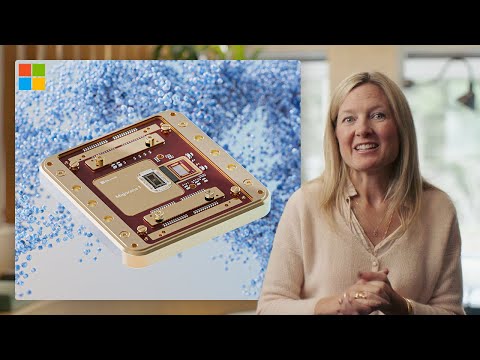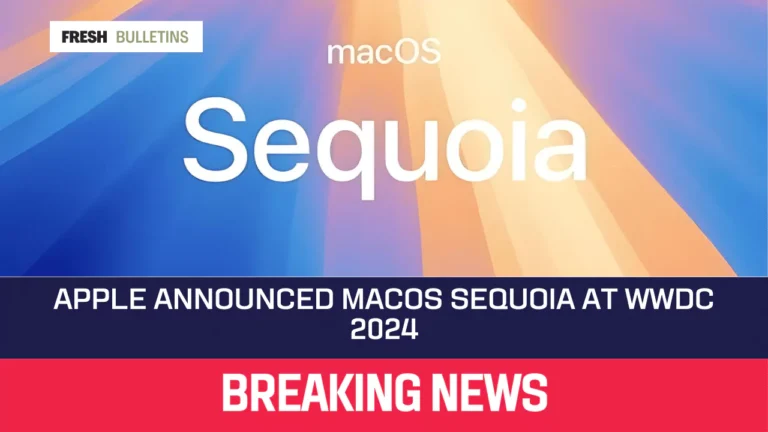Microsoft’s Majorana 1: A Leap Forward in Quantum Computing
Microsoft made the Majorana 1 chip to improve quantum computing. This chip uses new materials to build stable qubits for tasks. Majorana 1 shows a leap forward in quantum computing technology. The chip is built using advanced topoconductors and special superconductors. It offers new hope for scaling quantum systems with lower error rates. Engineers built the chip after many years of hard research work. The design aims to make qubits that stay stable for longer periods. Majorana 1 marks a key step in the quest for practical quantum computers.
The chip reduces errors by using a new state of matter. It sets a path for building future quantum machines that solve hard problems. Scientists trust this chip to bring quantum dreams to life. Researchers see strong new potential in the Majorana 1 breakthrough. The chip offers a solution that many experts have awaited. Its creation drives new ideas for quantum science and computing. Scientists and skilled engineers share ideas to overcome quantum challenges. Researchers see strong potential in the Majorana 1 breakthrough. The chip offers a solution that many experts have awaited. Its creation drives new ideas for quantum science and computing.
Background
Quantum computing uses qubits to solve problems faster than regular computers. Traditional qubits suffer from errors that disrupt accurate computation tasks. Engineers seek ways to build qubits that stay stable for long periods. Microsoft has pursued a new approach with its Majorana 1 chip. The chip uses topoconductors to host special quantum particles called Majoranas. Majoranas are unique particles that protect quantum data from environmental noise. The new chip design aims to scale qubits with lower error rates. Researchers work hard to achieve stable qubits that perform reliable calculations. This project took many years of study and careful engineering work.
The Majorana 1 chip is a product of persistent research and innovation. Experts say the chip may help build quantum computers that solve real problems. The design reduces complexity and improves control over fragile quantum states. Scientists use advanced labs to test the chip under extreme conditions. Data from experiments show promise for a more reliable quantum future. This background lays the foundation for new ideas in quantum research. Scientists and skilled engineers share ideas to overcome quantum challenges. New methods aim to protect qubits from noise and loss of data. This work brings us closer to a robust quantum computing era.
Technology
Majorana 1 uses an indium arsenide and aluminum hybrid design. Engineers built the chip by arranging atoms in a precise order. Topoconductors form the core material that supports stable qubit creation. The chip employs superconducting properties to limit errors during operations. Researchers use digital pulses to control the quantum states with clear signals. The chip can hold eight qubits on a small integrated platform.
Future designs aim to fit one million qubits on one chip. The new design reduces the need for complex error correction codes. Microsoft recently published its research in a respected scientific journal. The chip relies on unique material properties to secure quantum information. Scientists test the chip at temperatures near absolute zero every day. The design minimizes interference from external noise and magnetic fields.
Engineers verify the chip using advanced measurement systems and instruments. The new chip shows strong promise for future quantum computer applications. Microsoft develops the chip through iterative design and rigorous testing cycles. The hybrid design offers a clear path to improved quantum processing power. Innovation in chip architecture may drive breakthroughs in various scientific fields. This technology lays the groundwork for a new era of computing progress. Engineers carefully optimize the chip design with computer simulations and tests.
Advanced algorithms help support the chip to perform complex quantum tasks. The chip design uses modern materials that offer high stability and performance. Scientists examine every detail to ensure the chip meets standards. The breakthrough chip design sets a new benchmark in quantum research. Microsoft develops the chip through iterative design and rigorous testing cycles. The hybrid design offers a clear path to improved quantum processing power. Innovation in chip architecture may drive breakthroughs in various scientific fields. This technology lays the groundwork for a new era of computing progress.
Engineers carefully optimize the chip design with computer simulations and tests. Advanced algorithms help support the chip to perform complex quantum tasks. The chip design uses modern materials that offer high stability and performance. Scientists examine every detail to ensure the chip meets standards. The breakthrough chip design sets a new benchmark in quantum research.
Impact
The Majorana 1 chip may change how we solve complex global problems. Stable qubits can help discover effective new medicines and materials. Quantum computers may solve puzzles that are too hard for current machines. This chip can boost research in energy, health, and science. Faster quantum operations may cut research time and lower costs. Many experts hope this breakthrough will lead to useful quantum machines. Industries such as medicine and energy may benefit from the chip.
The chip may reduce errors in calculations that impact daily life. Investments in quantum research may grow with this promising development. Educational programs may include quantum studies because of this chip innovation. The breakthrough may spark new jobs in science and technology fields. It can encourage more research in both academic and industrial labs.
A future with quantum computers may solve problems once deemed impossible. The chip has the power to drive progress across many sectors. Its performance opens new paths for breakthroughs in computational science. This advancement inspires hope and builds strong foundations for future work.
This development boosts global research efforts to harness quantum potential for change. Industries and governments invest in quantum science due to promising chip results. The breakthrough motivates further innovative work on error-resistant and scalable quantum devices. Stable qubits can help discover effective new medicines and materials. The progress we see today may truly define the bright future of global technology advances.
Conclusion
Majorana 1 represents a new era in quantum computing progress. The chip shows that stable qubits are within our reach. It opens doors for solving hard problems in many fields. Researchers will build on this design to create larger quantum systems. Future chips may host millions of qubits with error rates. The innovation stems from years of careful study and design work. Engineers and scientists share a vision for a quantum future. The Majorana 1 chip is a product of persistent hard work. It lays a solid foundation for error-resistant quantum computing architectures.
The breakthrough encourages more work in labs around the world. This chip drives the quest for practical and powerful quantum machines. Microsoft stands at the forefront of a quantum revolution today. The new chip design sparks hope in the scientific community. Progress in this field may bring solutions to global challenges. Quantum computing may change how we live and work. This chip will undoubtedly guide future projects and inspire novel computing techniques globally. It stands as solid proof that persistent work can yield breakthrough innovations in science. The progress we see today may truly define the bright future of global technology advances.








